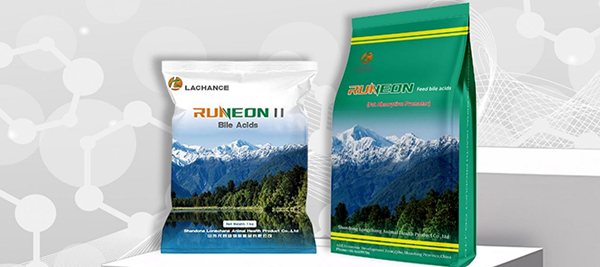RUNEON® Bile Acids: A Technical Lever for Cost-Effective Poultry Feed
Against the backdrop of high poultry farming costs and continuously shrinking profit margins, "cost reduction" does not simply mean lowering feed quality or feed intake; its core lies in improving feed utilization efficiency, ensuring that every penny invested in feed generates the maximum value. As an upstream feed enterprise in the breeding industry, how can we truly achieve cost reduction and efficiency improvements in poultry feed through functional additives?
The Cost Dilemma: Is Feed Money Really Spent Where It Matters?
In traditional poultry farming, a significant portion of feed costs is consumed by invisible "waste":
Incomplete Digestion: Particularly for fats and fat-soluble nutrients in feed, if digestion and absorption are insufficient, they are directly excreted in feces, resulting in direct nutrient waste and financial loss.
Excessive Liver Burden: Modern poultry grows rapidly and faces significant production pressure. The liver, as the "core engine" of nutrient metabolism, is prone to long-term overload, leading to fatty liver disease and functional decline. This, in turn, affects overall nutrient conversion and health, indirectly increasing mortality rates and veterinary costs.
Hidden Losses: If toxins like mycotoxins and metabolic waste in feed cannot be effectively eliminated, they will continuously harm poultry health and inhibit production performance.
Therefore, the key to reducing costs and improving efficiency lies in bridging the "last mile" of nutrient absorption and safeguarding the "chemical plant" of poultry health—the liver.
The Solution: Maximizing Feed Value with "Bile Acids" as the Engine
Bile acids are digestive fluids naturally secreted by the animal liver and are crucial for the digestion and absorption of fats and fat-soluble substances.
Direct Cost Reduction: Improving Fat Digestibility and Saving Feed Costs
Fat is a key ingredient for providing high energy. Studies show that adding 60–70 mg/kg of bile acids to the diet can increase the digestibility of feed fat in poultry by 5%–8% (data reference: *Poultry Science*).
Core Efficiency Improvement: Enhancing Key Production Indicators and Amplifying Profits. The essence of "efficiency improvement" is to produce more poultry meat and eggs with the same feed input. By optimizing energy supply and liver health, bile acids directly enhance economic benefits.
Hidden Revenue Increase: Protecting Liver Health and Reducing Veterinary Costs and Mortality. Liver health is the cornerstone of efficient production. Bile acids effectively clear the bile ducts, eliminate endotoxins, alleviate liver burden, and significantly prevent the occurrence of fatty liver disease. A healthy flock means: A notable reduction in mortality rates, directly preserving your assets. Enhanced disease resistance, reducing investment in veterinary drugs and health products.










